Books
Toy Theory: technology and imagination in play, Cambridge MA: MIT Press (2024). Open Access

excerpts (from draft):
Gameworlds: virtual media & children’s everyday play, New York: Bloomsbury
Now available Open Access
http://www.bloomsbury.com/uk/gameworlds-9781623568023/
Sample draft material:
Play grounds
The New Media & Technocultures Reader gathers texts which map the cultural implications of new media, encapsulating and challenging key debates, theoretical positions, and approaches to research.
New Media: a critical introduction was a comprehensive introduction to the culture, history, technologies and theories of new media
Excerpt: What is Digital Cinema?
Book chapters
The achievement of animals: an ethology of AI in videogames, in Markus Spöhrer & Harald Waldrich (eds) Being In-Game: processes and situations of digital gaming, Springer. 2020.
LEGOfied-An imaginary system foreword to Nicholas Taylor and Chris Ingraham (eds) LEGOfied: building blocks as media, New York: Bloomsbury. 2020.
Toying with the Singularity: AI, automata and imagination in play with robots and virtual pets in Giovanna Mascheroni & Donell Holloway (eds) The Internet of Toys: practices, affordances and the political economy of children’s smart play. Palgrave Macmillan. 2019.
‘We both know your yearnings: desiring machines and distributed emotion’, in Danny Aldred and Andy Lapham (eds) Structures of Experience: un-coding and coding emotions, Winchester: Book-lab.org. 2018.
‘SimKnowledge: what museums can learn from videogames’, in Michelle Henning (ed.) Museum Media, International Handbooks of Museum Studies. Malden MA: Wiley 2015. http://onlinelibrary.wiley.com/book/10.1002/9781118829059/
‘Bright bricks, dark play: on the impossibility of studying LEGO’ [draft], in Mark J.P. Wolf (ed.) LEGO Studies: examining the building blocks of a transmedial phenomenon. New York: Routledge 2014.
Simulation (Games), in Bernard Perron and Mark J.P. Wolf (eds) The Routledge Companion to Video Game Studies, New York: Routledge 2013.
Drawing without light, in Martin Lister (ed.) The Photographic Image in Digital Culture (2nd edition), London: Routledge 2013.
with Helen W. Kennedy, ‘Little Jesuses and Fuck-off Robots: on aesthetics, cybernetics, and not being very good at Lego Star Wars’, in Melanie Swalwell & Jason Wilson (eds) The Pleasures of Computer Games: essays on cultural history, theory and aesthetics, McFarland & Co. 2008.
‘I’m the one who makes the Lego Racers go’: studying virtual and actual play, in Shanly Dixon & Sandra Weber (eds) Growing Up Online: young people and digital technologies, Palgrave / Macmillan 2007.
‘Playing with nonhumans: digital games as technocultural form’, in Suzanne de Castell & Jen Jenson (eds) Worlds in Play: international perspectives on digital games research, Peter Lang 2007.
with Helen W. Kennedy, ‘Digital games as new media’, in Jason Rutter & Jo Bryce (eds) Understanding Digital Games, Sage 2006.
Journal articles
‘Why look at toy animals? Play, protopolitics and the postnatural,’ Cultural Politics 20(1), 2024.
‘Playground equipment: postdigital design and the mechanics of history, urban space, and play [Open Access],’ Space and Culture 27(2), 2024.
‘The history of games could be a history of technology’, ROMchip: a journal of game histories 1(1) 2019. (longer version here).
‘Configuring the 15-second dancers: distributed creativity in design for postdigital play’, International Journal of Creative Media Research 1(1) 2019.
‘Accursed play: the economic imaginary of early game studies’, Games and Culture 13(7) 2018. Final draft.
With Alison Harvey, ‘Ludic economies 101: introduction the Ludic Economies special issue’, Games and Culture 13(7) 2018. Final version.
With Daniel Ashton, ‘At work in the toy box: bedrooms, playgrounds, and ideas of play in creative cultural work’, International Journal of Entrepreneurship and Innovation 19(2), 81-89, 2018. Authors’ accepted version.
‘The phenomenology of Angry Birds: virtual gravity and distributed proprioception in videogame worlds’, Journal of Gaming and Virtual Worlds. Draft version. 2017.
‘Pokemon Go and distributed imagination’, Mobile Media & Communication 5(1), 59-62, 2017. Draft here
‘What is the state of play (the work of the Opies for the postdigital era)?’, International Journal of Play. 3(3). Edited and revised version here.
‘Mini-games, monsters & Mr Happy’ (video essay), Audio Visual Thinking: the journal of academic videos, no.2, Sep 2011. This journal now seems to be defunct, see the video here.
With Helen W. Kennedy, ‘Incremental speed increases excitement: bodies, space, movement and televisual change’, Journal of Television and New Media (special issue on the Nintendo Wii, edited by James Tobias), 11(3), April 2010
Events and collusions: a glossary for the microethnography of videogame play, Games and Culture 4(2), April 2009
Dionysiac machines: videogames and the triumph of the simulacra,Convergence: the international journal of research into new media technologies, 13(3), November 2007
A ‘pataphysics engine: technology, play and realities [special section on Baudrillard and gaming], Games and Culture, 2(4), October 2007
The Circle of Life: nature and representation in Disney’s The Lion King, Third Text, no.34, Winter 1999/2000
Talks and presentations
My keynote talk ‘The game economy: designing for, and playing with, the digital era’, for ICOFEP 4: Economics, Finance and Management in the Digital Era, Poznań University of Economics and Business, November 19th 2020
Project reports
‘Hand-held cinema, or the most successful toys that move‘, Bill Douglas Cinema Museum research stipend report 2018
Nesta Digital R&D Fund for the Arts: Pavilion Dance South West Dance Video Game, February 2015 [RD-Report-Pavilion-Dance-South-West-2015].
Encyclopedia entries
The International Encyclopedia of Communication Theory & Philosophy, Wiley-Blackwell 2016:
Cyborg
Cyberspace
Robot
Virtual Reality
The Sage Encyclopedia of Out of School Learning, Sage 2017:
Reviews
Terry Flew New Media: an introduction (2nd edition), Oxford: Oxford University Press 2005, in Convergence: the international journal of research into new media technologies, 13(1) 2007
Rene Laloux’s Savage Planet (DVD), in Journal of Science Fiction Film & Television, 1(1) 2008
other bits and pieces
PhD thesis (UWE, 2006) Walkthrough: videogames as technocultural form.
The virtual camera, case study at www.newmediaintro.com, 2009 [link]
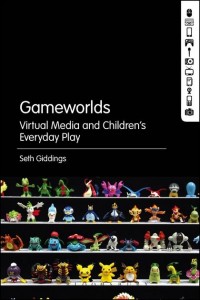
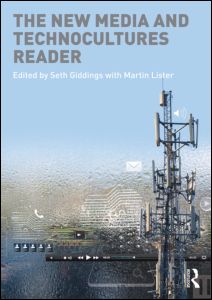
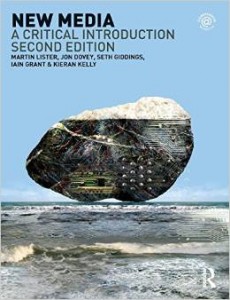
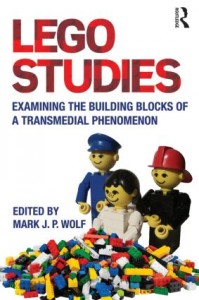
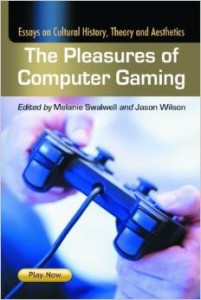
2 thoughts on “publications”